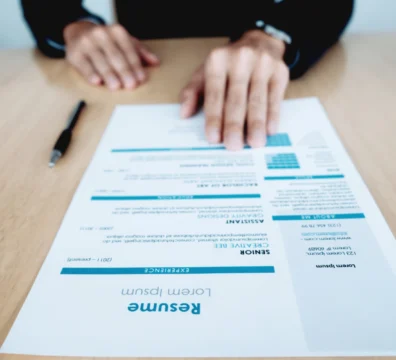Are you fed up with errant employee behaviour at the workplace? Is it creating a negative work environment, leading to talents leaving jobs? You can handle them informally by a quiet word or a reminder of your standards.
However, if the situation worsens, it’s time to implement a disciplinary procedure in HRM and eradicate such troubles. It will justify involuntary terminations and help you build a safe and productive workplace.
This article shares everything you must know about discipline and grievance procedures in HRM.
What is the Disciplinary Procedure in HRM?
Recent research says that nearly 70% of professionals wouldn’t work in a poor workplace culture, and 25% of the workers said it was the primary reason for changing their jobs. Thus, it makes companies focus on disciplinary procedures in HRM that can improve their work culture and retain talents longer.
It is a straightforward process implemented in organisations to address employee misconduct during their employment period. You can manage a transgression with an informal discussion or formal proceedings, depending on its severity.
However, set a framework to handle disciplinary action in HRM and make your employees aware of it.
Some disciplinary actions that you take in organisations include
- verbal warnings
- written warnings
- loss of privileges
- temporary pay cuts
- demotion
- suspension
- termination
Why Have a Disciplinary Procedure in HRM?
Generally, you must outline your disciplinary procedure in HRM in the employee handbook. It informs your employees about what actions you can take if they violate your expected conduct standards.
When you have a clear disciplinary policy in your company, you can deal with employees fairly and consistently. The purpose of such actions is to correct employee behaviour while documenting the issues in case of future problems.
Additionally, you can provide examples of unacceptable behaviours, particularly those considered gross misconduct. Different types of disciplinary problems in HRM can affect your work culture, such as employee misconduct, harassment, discrimination, absenteeism, workplace bullying, tardiness, and more.
What Does a Disciplinary Procedure in HRM Look Like?
The procedure for disciplinary action in HRM is formal and time-consuming. However, companies must follow these procedures to protect themselves from legal issues is essential.
It is even more crucial if your employee has a potential discrimination claim or can bring an unfair dismissal claim. A straightforward procedure can help you keep matters calm and professional in difficult situations with high emotions.
Here are some ways to implement fair and just disciplinary procedure in HRM:
Understanding the Issue
Before you undertake a formal disciplinary procedure, you must understand the issue. Some issues can be resolved through informal channels rather than conducting disciplinary proceedings.
For example, if an employee is turning up late to work but has an excellent disciplinary record, a quick word on an informal basis is enough to resolve the issue.
Follow a Fair Procedure
If your initial conversation with the employee doesn’t resolve the issue, you must follow a fair procedure. Ideally, your employee handbook will cover all disciplinary actions you can take against any unpleasant behaviour in the workplace.
Thoroughly Investigate the Situation
Now that you want to follow a formal disciplinary procedure, you must start investigating the issue thoroughly. For this, you can hire a third-party investigator, ideally an unbiased person, and collect evidence of the misconduct for use at a disciplinary hearing.
An internal team can also be formed and should have someone from top management, the HR department, the legal department, and equal representation of male and female colleagues.
Invite the Employee to a Disciplinary Meeting
After the proper investigation, you must send out a letter to the employee explaining why this disciplinary action is being taken against them. Additionally, hold a meeting to discuss the issue with the employee and make a proper disciplinary decision. You must explain the allegations against them, review the evidence, and allow the employee to comment.
Decide on Action to Take
Once you consider all evidence, you should adjourn the meeting and decide what disciplinary action must be taken against them. Usually, there are four stages of disciplinary action taken in organisations that begin with formal warnings and end with termination.
What are the 4 stages of disciplinary action?
- Verbal warning
- Written warning
- Suspension without pay
- Termination
There are numerous other disciplinary actions that you can consider, like
- Recommending a formal performance improvement plan
- Demotion
- Retraining
- Temporary pay cut
- Loss of privileges
However, ensure you’re investigating fairly before considering the above disciplinary actions. Additionally, if you issue an official written warning to an employee, store that with their employment records.
Allow Follow-Up After the Disciplinary Procedure
Finally, if you decide to dismiss an employee, you must hold a termination meeting. Additionally, make sure your employees get a chance to appeal your decision.
Disciplinary Procedure in HRM Best Practices
A disciplinary procedure in HRM can be one of the most demanding aspects of your organisation. It helps you set up expectations for the team and document the disciplinary process initially.
Listed below are a few best practices of disciplinary procedures in the workplace
- Carry out a proper HR investigation
- Create an appropriate policy of discipline
- Communicate your disciplinary procedures to employees
- Explain to employees how to appeal a disciplinary decision
- Educate your HR managers on the disciplinary procedure in HRM
- Document your disciplinary actions and create a legally defensible process
- Keep your disciplinary procedures updated
How 6 Pence Helps
Conducting a disciplinary procedure in HRM for any parties involved may not be pleasant. However, having a clear policy with outlined unwanted employee behaviours and actions to be taken against them ensures a fair and transparent workplace environment.
Additionally, employees feel safe working with you and enjoy a healthy and positive work culture.
However, for any staffing assistance in Oman, Iraq, Bahrain, and Dubai, you can always connect with 6 Pence. We are the leading staff outsourcing and HR solution providers in the GCC, helping businesses with legal framework and documentation, besides offering staffing, payroll, recruitment, and more services.
Also Read : What is the Importance of Employee Satisfaction in Organisations?
Frequently Asked Questions
What is the disciplinary procedure in HRM?
The disciplinary procedure in HRM is an organisation’s approach to modifying undesirable employee performance and behaviour through a corrective action process.
What are the steps in the disciplinary process?
There are usually four steps in the disciplinary process: verbal warning, written warning, final written warning, suspension, and termination.
What is the HR discipline policy?
The HR discipline policy identifies and standardises plans for responding to an unpleasant incident that violates company policy.




































































































